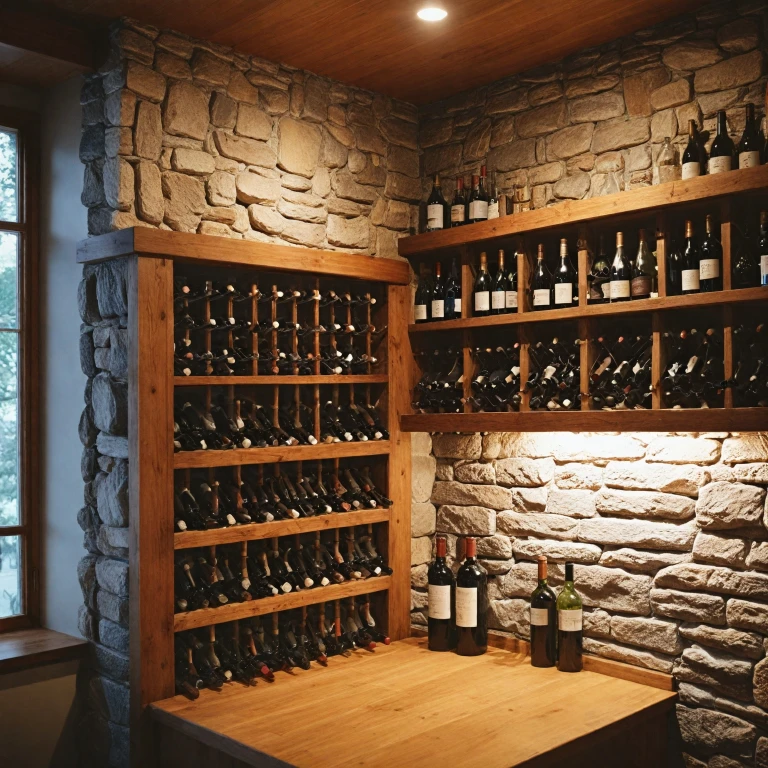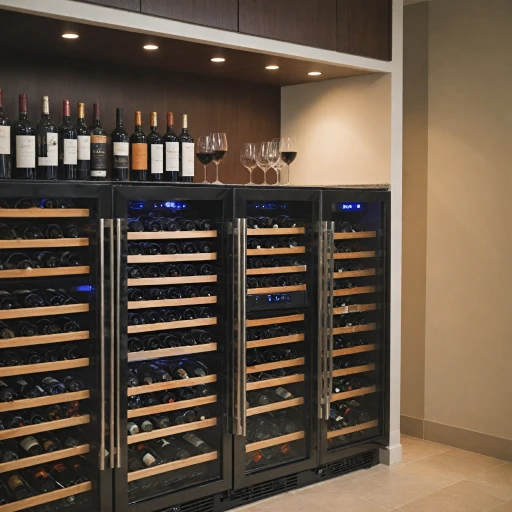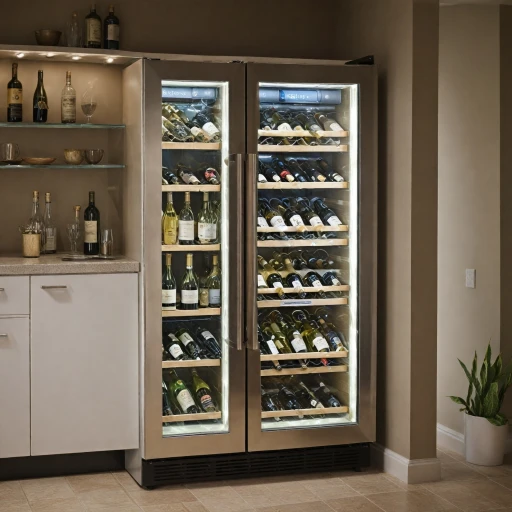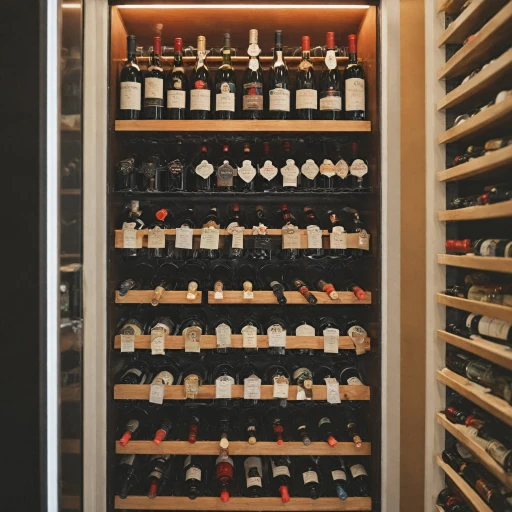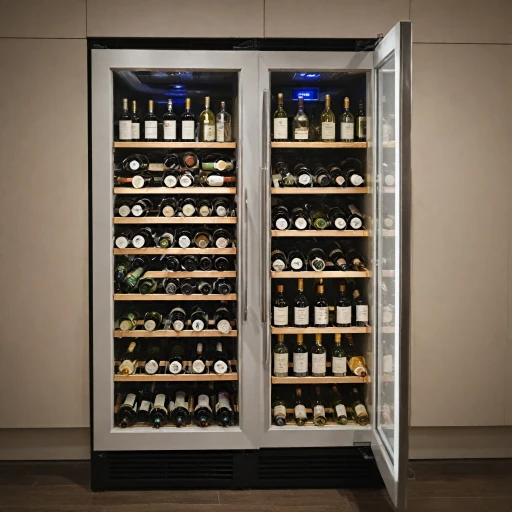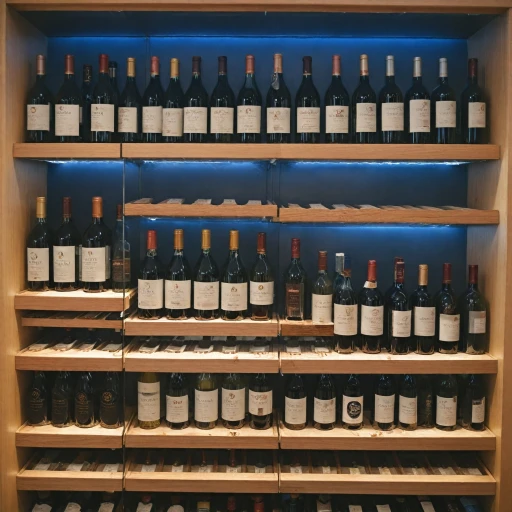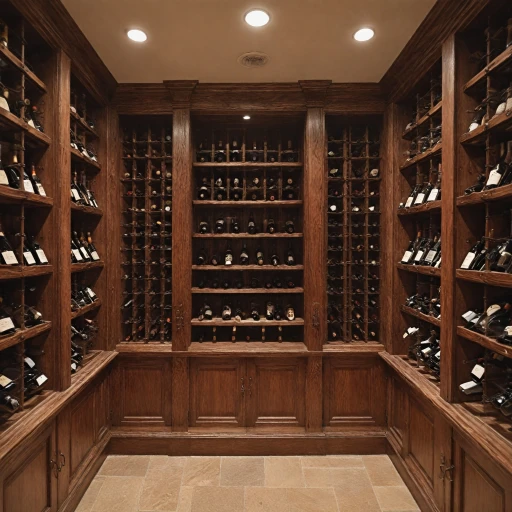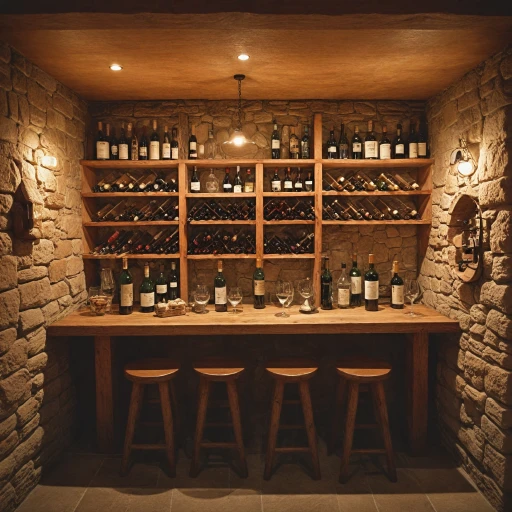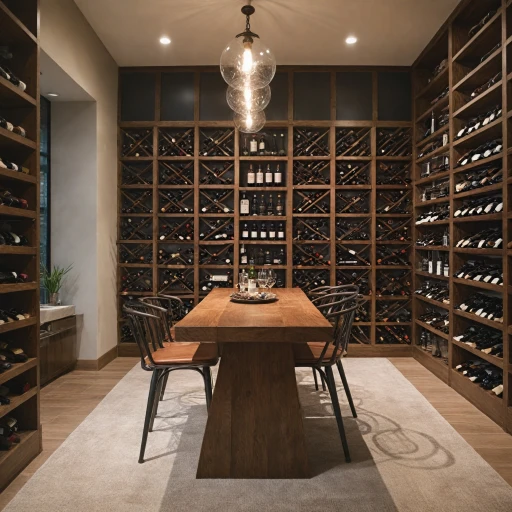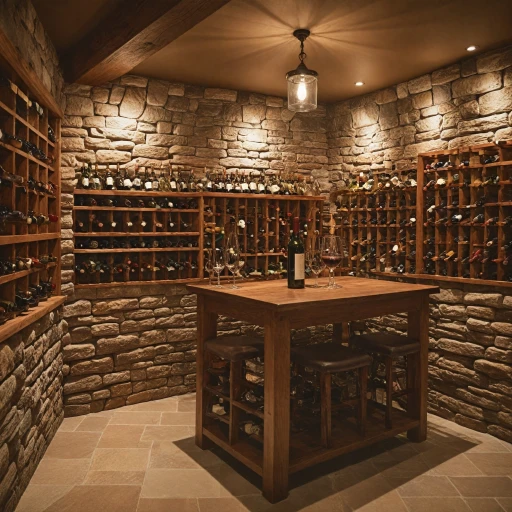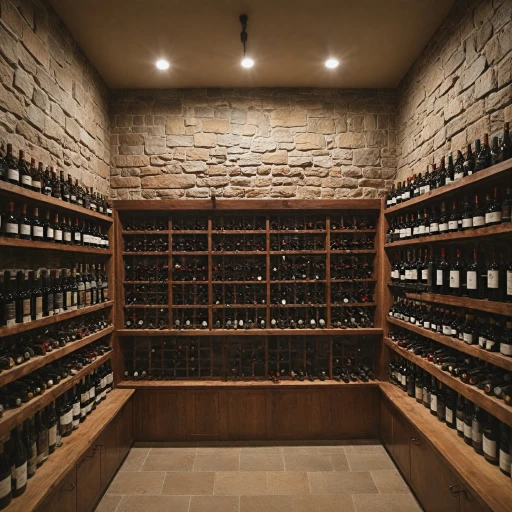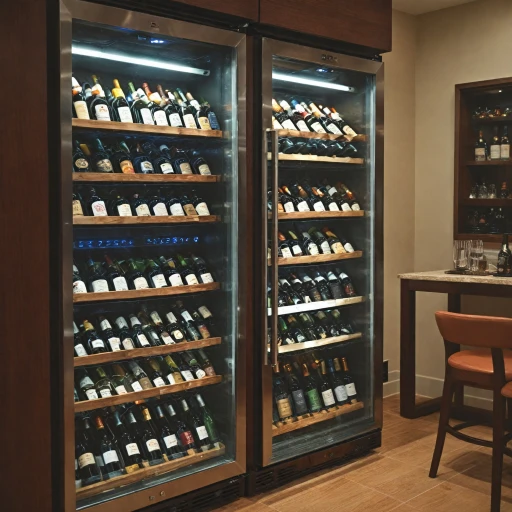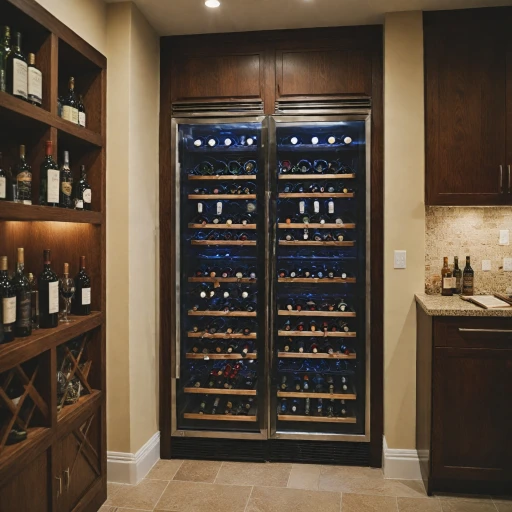
Choosing the Perfect Location for Your Wine Cellar
Finding the Ideal Spot for Your Wine Creation
Your journey to crafting a wine cellar begins with selecting the perfect location, a step that sets the tone for the subsequent phases of your DIY wine cellar project. The right place will cater to your wine's needs in terms of temperature, humidity, and storage capabilities.
The ideal spot offers a steady environment where fluctuations in temperature and humidity are minimal. Typically, basements are prized for their stable climate and natural insulation, ideal for maintaining your wine collection’s integrity. If a basement isn’t an option, any room that can be easily insulated and remains away from direct sunlight and vibrations will serve your purpose.
When choosing your location, it’s essential to account for the cooling system you intend to install. Efficient cooling units will ensure your wine stays at optimal temperature, enhancing its preservation over time. The space you choose should also have sufficient room to house wine racks or racks tailored to fit your anticipated collection size.
Space consideration involves not just square footage but also height. Higher walls allow for more vertical storage space, perfect for growing collections. Enclosing this area with walls and a sturdy door, paired with a proper vapor barrier, will enhance the room’s ability to sustain ideal conditions.
Finally, don’t overlook the importance of insulating your chosen location. Proper insulation of the walls and ceiling is vital in maintaining temperature and humidity levels, necessary for your wine’s longevity.
As you embark on your wine cellar journey, remember that each aspect, from wall structure to cooling capabilities, plays a pivotal role in creating a haven for your prized bottles. Explore more about optimal placement techniques and contemporary storage solutions on this link.
Essential Tools and Materials for Building a Wine Cellar
Getting Started with the Essentials
Building your own wine cellar is an exciting venture that begins by gathering the essential tools and materials. Ensuring that you are well-prepared will set a solid foundation for creating a space that protects your wine collection effectively. Key Materials to Consider- Insulation: High-quality insulation for the walls and ceiling is crucial to maintain the ideal temperature and humidity levels. A well-insulated space will shield your wine from temperature fluctuations.
- Vapor Barrier: A vapor barrier should be incorporated to keep humidity levels in check. This component prevents moisture from seeping into the walls, which can affect wine storage conditions.
- Wine Racks: Choose sturdy wine racks that can manage the weight of your bottles, cater to storage needs, and be customized to the layout of the room. Consider modular options for versatility.
- Wine Cooling Unit: Select a suitable wine cooling system designed for the size of your wine room. Proper cellar cooling units are critical to maintaining an indoor climate that nurtures your wine.
- Doors and Wall Panels: Solid cellar doors and wall panels are essential in sealing off your wine storage space, contributing to the overall insulation and security of the collection.
- Drills and power tools for assembling wine racks and other structures.
- Measuring tools to ensure precision when cutting insulation and installing wine racks.
- Fasteners and brackets to secure various components to walls and ceiling.
Designing Your Wine Cellar: Layout and Aesthetics
Structuring the Layout: Aligning Form with Function
Designing your wine cellar goes far beyond just finding physical space; it’s about aligning function with aesthetics in your wine room. Begin by determining the ideal wine storage system, considering both current and future needs of your wine collection. You may choose between traditional wine racks or custom-built shelving units that seamlessly fit the dimensions of your cellar. When planning the layout, consider the strategic placement of your cellar cooling unit. Maintaining optimal temperature and humidity levels is crucial in preserving the quality of your wine, so ensure that the cooling units are installed in a manner that facilitates air circulation without obstruction.Enhancing with Insulation and Vapor Barrier
Insulating the walls and ceiling of your wine cellar is pivotal in controlling temperature fluctuations and maintaining the ideal storage conditions. Adequate insulation paired with a proper vapor barrier will help in preserving consistent humidity levels, thus safeguarding your wine collection from potential damage. If budget allows, investing in high-quality insulation materials can enhance the efficiency of your cooling system, reducing energy consumption in the long run. For more detailed insights into crafting effective wine storage solutions, explore our comprehensive wine cabinet plans guide.Creating a Seamless Aesthetic
While functionality is paramount, the visual appeal of your wine cellar shouldn’t be overlooked. The integration of stylish wine racks and aesthetically pleasing materials can transform your cellar wine room into a cozy retreat. Consider the types of wood or metals that complement the door and walls, adding an elegant touch to your overall design. Moreover, strategically placed lighting can highlight your wine collection, creating an impressive display for guests. However, ensure that the lighting does not increase the room temperature, as maintaining the right environment is crucial. Incorporating energy-efficient LED lighting can mitigate any risks associated with heat emission. Finally, consider the security aspects of your cellar, investing in a solid door and reliable lock system to protect your valuable investment.Temperature and Humidity: Key Factors in Wine Preservation
Managing Climate for Optimal Wine Preservation
When embarking on your DIY wine cellar journey, understanding how to maintain the right climate is paramount for preserving your wine collection. Grapes might be sensitive fruits, but wines are equally delicate and require meticulous attention to their environment. Here, we delve into the intricacies of temperature and humidity control.
First, let’s talk about temperature—a critical factor in wine storage. The ideal temperature for most wines is around 55°F (about 13°C), but maintaining a consistent temperature is even more crucial than the exact number. Fluctuations can lead to spoilage or premature aging. As such, installing a reliable cooling unit becomes imperative. These units are specially designed to regulate the climate within the confines of your wine room, avoiding the perils of temperature shifts.
Next, we must address the humidity levels. Humidity plays a key role in keeping your corks from drying out, thereby preventing air from seeping into the bottles and spoiling the wine. An optimum humidity level ranges between 50% and 70%. Including a vapor barrier when building is essential to control moisture within the cellar. Installing insulation behind walls and ceiling further aids in managing external temperature influences and maintains the desired humidity balance.
The path to a perfect wine climate doesn't end here—consider the air circulation within the cellar. Good air flow is vital to ensuring your wine racks are stored properly without the interference of odors or fluctuating tempers within the cellar walls.
Lastly, remain mindful of the architecture of your wine space. A well-sealed door, combined with an insulated wine cellar, ensures that external climate factors remain at bay while optimizing internal conditions—an elementary step in safeguarding your wine collection.
Lighting and Security Considerations
Lighting Concerns: Shedding Light on Your Wine Collection
When building your diy wine cellar, the role of lighting cannot be overlooked. It's more than just seeing your beautiful collection of wine bottles on display. The type of lighting in your wine room will impact your wine storage and can affect both temperature and humidity levels over time.
The ideal lighting choice is LED lights, known for their low heat emission and energy efficiency. Excessive heat can even alter the temperature and humidity, which could negatively impact your wine. Wall sconces or track lighting that gently illuminate the space without direct exposure on the bottles are excellent options. Remember, UV light can be harmful to wine, so reducing exposure is crucial.
Security Considerations: Protecting Your Investment
Wine cellars are an investment, not just in terms of the wine collection but in their constructing too. To safeguard this asset, you should consider the installation of security measures. A sturdy wine cellar door is your first line of defense. Look for a solid door that seals well to maintain the room's temperature and humidity. Insulation of the door and walls ceiling is vital for preserving the ideal environment within your wine storage facility.
Additionally, investing in a security system tailored to your needs, like a simple lock or an elaborate surveillance setup, can discourage potential threats. Regular checks on your cooling units and racks should be scheduled to maintain the overall health of your wine collection.
Maintenance Tips for Your DIY Wine Cellar
Ongoing Care for Longevity
Maintaining your DIY wine cellar is essential to ensure your wine collection remains in optimal condition. Regular maintenance tasks can help you preserve the ideal environment for your prized bottles and capitalize on your initial investment in building a wine room.- Monitor Temperature and Humidity: Consistently check the temperature and humidity levels within your wine cellar. The ideal temperature should be between 45-65°F, with a humidity level of 50-80%. Excessive fluctuations may affect your wine adversely. An efficient cooling system and appropriate insulation will help maintain these conditions.
- Inspect the Cooling Unit: Ensure your cooling units are functioning well. Look for signs of wear or inefficiency. Regularly service it to avoid any breakdowns that could jeopardize your wine storage conditions.
- Check for Leaks and Maintain Insulation: Inspect the walls, doors, and ceilings for any signs of leakage or damage. Make sure your vapor barrier is intact to prevent unwanted air exchange between spaces. An effective barrier paired with good insulation helps maintain proper humidity levels.
- Clean and Reorganize Wine Racks: Periodically, take time to clean your wine racks to ensure they are free from dust and mold. Reorganize bottles as needed to take advantage of the space, ensuring that each bottle remains accessible.
- Secure the Wine Cellar: Your wine collection is invaluable, and taking steps to secure the area is crucial. Regularly check your security systems, ensuring that the room is only accessible to authorized persons.
- Air Circulation: Occasionally open the door to let in fresh air. This can help in reducing any stale smells and improve air circulation inside your cellar room, enhancing the overall environment.
